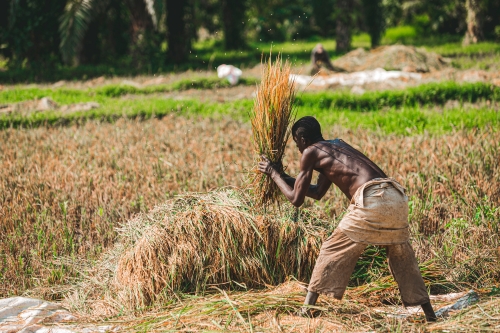Home/content/Harvesting: The Culmination of Agricultural Efforts
Harvesting: The Culmination of Agricultural Efforts

Harvesting is a crucial stage in the agricultural cycle, marking the culmination of months of hard work and careful cultivation. It is the moment when farmers reap the rewards of their efforts, bringing forth the bounty of crops that will nourish communities and contribute to the sustenance of the world. In this article, we delve into the significance of harvesting in the agricultural context.
The Timing of Harvest
The timing of the harvest is a critical decision that depends on various factors such as the type of crop, climate, and the intended use of the produce. Different crops have different maturation periods, and harvesting at the right time ensures optimal quality and yield. Factors like weather conditions, market demand, and the specific requirements of the crop influence the decision-making process for farmers.
Methods of Harvesting
Harvesting methods vary based on the type of crop and the scale of cultivation. Manual harvesting involves labor-intensive practices where workers use tools like sickles or knives to cut the crops. Mechanized harvesting, on the other hand, employs machinery such as combine harvesters for large-scale operations. The choice of method depends on factors like crop type, available technology, and the economic feasibility for the farmer.
Importance of Timing and Technique
The importance of timing in harvesting cannot be overstated. Harvesting too early or too late can significantly impact the quality and shelf life of the produce. Additionally, the technique employed in harvesting plays a crucial role. Careful handling of crops during the harvesting process helps prevent damage and ensures that the produce reaches consumers in optimal condition.
Post-Harvest Handling
Post-harvest handling involves a series of activities that take place after the crops have been harvested. Cleaning, sorting, and packaging are essential steps to prepare the produce for market distribution. Proper post-harvest handling not only maintains the quality of the crops but also extends their shelf life, reducing waste and ensuring that consumers receive fresh and nutritious products.
Challenges in Harvesting
Despite advancements in agricultural technology, harvesting still poses challenges for farmers. Labor shortages, especially during peak harvesting seasons, can impact the timely collection of crops. Weather conditions, such as unexpected rainfall or extreme temperatures, can also disrupt harvesting schedules and affect the quality of the produce. Addressing these challenges requires a combination of technological solutions, workforce management, and adaptability to changing environmental conditions.
Traditional vs. Modern Harvesting Practices
While traditional harvesting methods are still prevalent in many regions, modern harvesting practices are gaining popularity due to their efficiency and productivity. Modern equipment and machinery not only speed up the harvesting process but also reduce labor requirements. However, the choice between traditional and modern methods often depends on factors such as the scale of farming, available resources, and the specific needs of the crops being cultivated.
Conclusion
Harvesting stands as a pivotal moment in agriculture, representing the culmination of the farmer's dedication and hard work. The careful timing and technique employed during harvesting directly influence the quality of the produce that reaches consumers. As agriculture continues to evolve, finding solutions to the challenges in harvesting and balancing traditional wisdom with modern advancements will be crucial in ensuring a sustainable and efficient agricultural system.